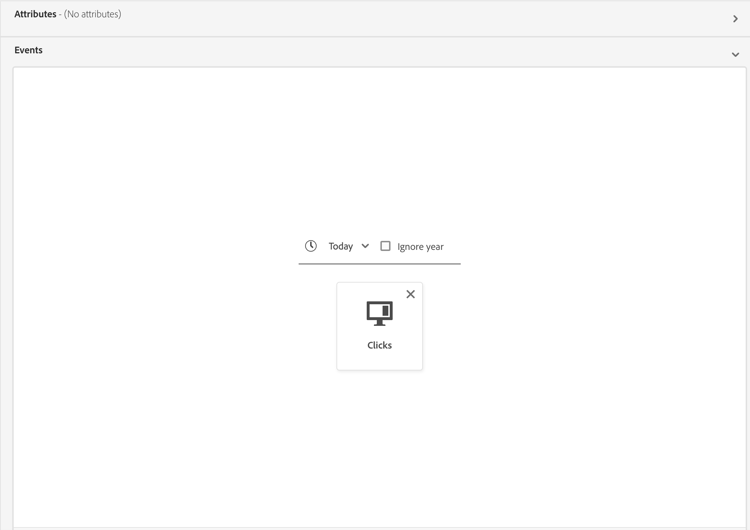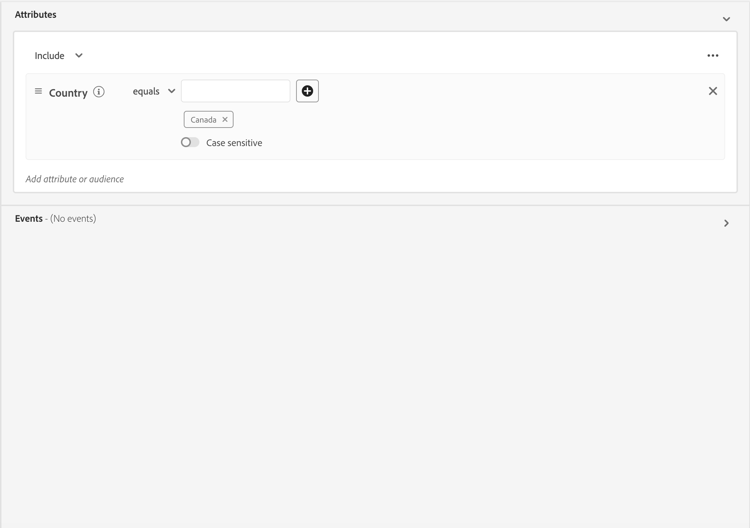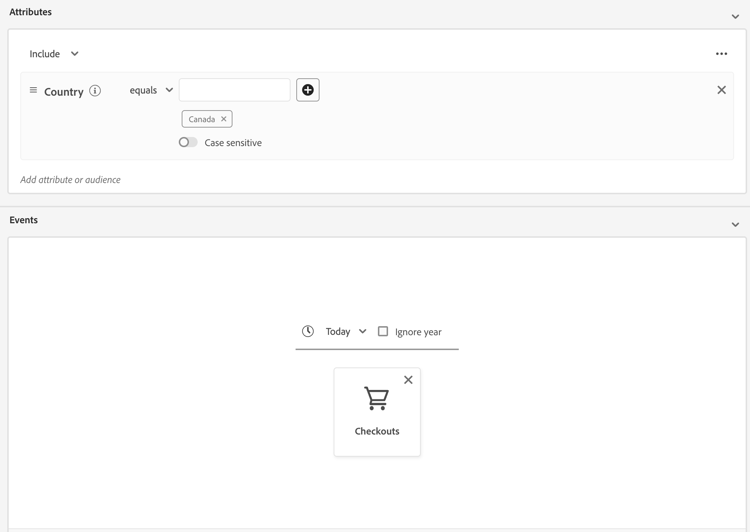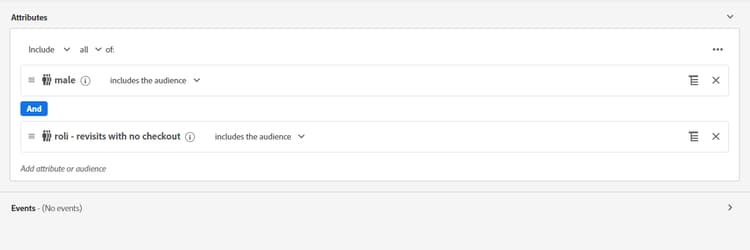Edge segmentation guide
Edge segmentation is the ability to evaluate segment definitions in Adobe Experience Platform instantaneously on the edge, enabling same page and next page personalization use cases.
Edge segmentation query types query-types
A query can be evaluated with edge segmentation if it meets any of the criteria outlined in the following table.
CHAIN(xEvent, timestamp, [C0: WHAT(eventType.equals("commerce.checkouts", false)) WHEN(today)])
homeAddress.country.equals("US", false)
workAddress.country.equals("US", false) and CHAIN(xEvent, timestamp, [C0: WHAT(eventType.equals("commerce.checkouts", false)) WHEN(today)])
inSegment("a730ed3f-119c-415b-a4ac-27c396ae2dff") and inSegment("8fbbe169-2da6-4c9d-a332-b6a6ecf559b9")
Additionally, the segment definition must be tied to a merge policy that is active on edge. For more information about merge policies, please read the merge policies guide.
A segment definition will not be eligible for edge segmentation in the following scenario:
- The segment definition includes a combination of a single event and an
inSegmentevent.- However, if the segment definition contained in the
inSegmentevent is profile only, the segment definition will be enabled for edge segmentation.
- However, if the segment definition contained in the
- The segment definition uses “Ignore year” as part of its time constraints.
Create audience create-audience
You can create an audience that is evaluated using edge segmentation using either the Segmentation Service API or through Audience Portal in the UI.
A segment definition can be edge-enabled if it matches one of the eligible query types.
API format
| code language-http |
|---|
|
Request
| accordion | ||
|---|---|---|
| A sample request to create a segment definition that is enabled for edge segmentation | ||
|
Response
A successful response returns HTTP status 200 with details of your newly created segment definition.
| accordion | ||
|---|---|---|
| A sample response when creating a segment definition. | ||
|
More information about using this endpoint can be found in the segment definition endpoint guide.
In Audience Portal, select Create audience.

A popover appears. Select Build rules to enter Segment Builder.

Within Segment Builder, create a segment definition that matches one of the eligible query types. If the segment definition qualifies for edge segmentation, you’ll be able to select Edge as the Evaluation method.

To learn more about creating segment definitions, please read the Segment Builder guide
Retrieve audiences evaluated using edge segmentation retrieve-audiences
You can retrieve all audiences that are evaluated using edge segmentation using either the Segmentation Service API or through Audience Portal in the UI.
Retrieve a list of all segment definitions that are evaluated using edge segmentation within your organization by making a GET request to the /segment/definitions endpoint.
API format
You must include the query parameter evaluationInfo.synchronous.enabled=true in the request path to retrieve segment definitions evaluated using edge segmentation.
| code language-http |
|---|
|
Request
| accordion | ||
|---|---|---|
| A sample request to list all the edge-enabled segment definitions | ||
|
Response
A successful response returns HTTP status 200 with an array of segment definitions in your organization that are enabled for edge segmentation.
| accordion | ||
|---|---|---|
| A sample response that contains a list of all edge-segmentation-enabled segment definitions in your organization | ||
More detailed information about the segment definition returned can be found in the segment definitions endpoint guide. |
You can retrieve all the audiences that are enabled for edge segmentation within your organization by using filters in Audience Portal. Select the


Within the available filters, go to Update frequency and select “Edge”. Using this filter displays all audiences in your organization that are evaluated using edge segmentation.

To learn more about viewing audiences in Experience Platform, please read the Audience Portal guide.
Audience details audience-details
You can view details of a specific audience evaluated using edge segmentation by selecting it within Audience Portal.
After selecting an audience on Audience Portal, the audience details page appears. This displays information about the audience, including a summary of the audience details, the amount of qualified profiles over time, as well as the destinations the audience has been activated to.

For edge-enabled audiences, the Profiles over time card is displayed, which shows the total qualified and the nwe audience updated metrics.
The Total qualified metric represents the total number of qualified audiences, based on edge evaluations for this audience.
The New audience updated metric is represented by a line graph that shows the change in audience size through edge segmentation. You can adjust the dropdown to show the last 24 hours, last week, or last 30 days.

For more details on audience details, please read the Audience Portal overview.
Next steps
This guide explains what edge segmentation is, as well as how to create a segment definition that can be evaluated using edge segmentation on Adobe Experience Platform.
To learn more about using the Experience Platform user interface, please read the Segmentation user guide.
For frequently asked questions about edge segmentation, please read the edge segmentation section of the FAQ.